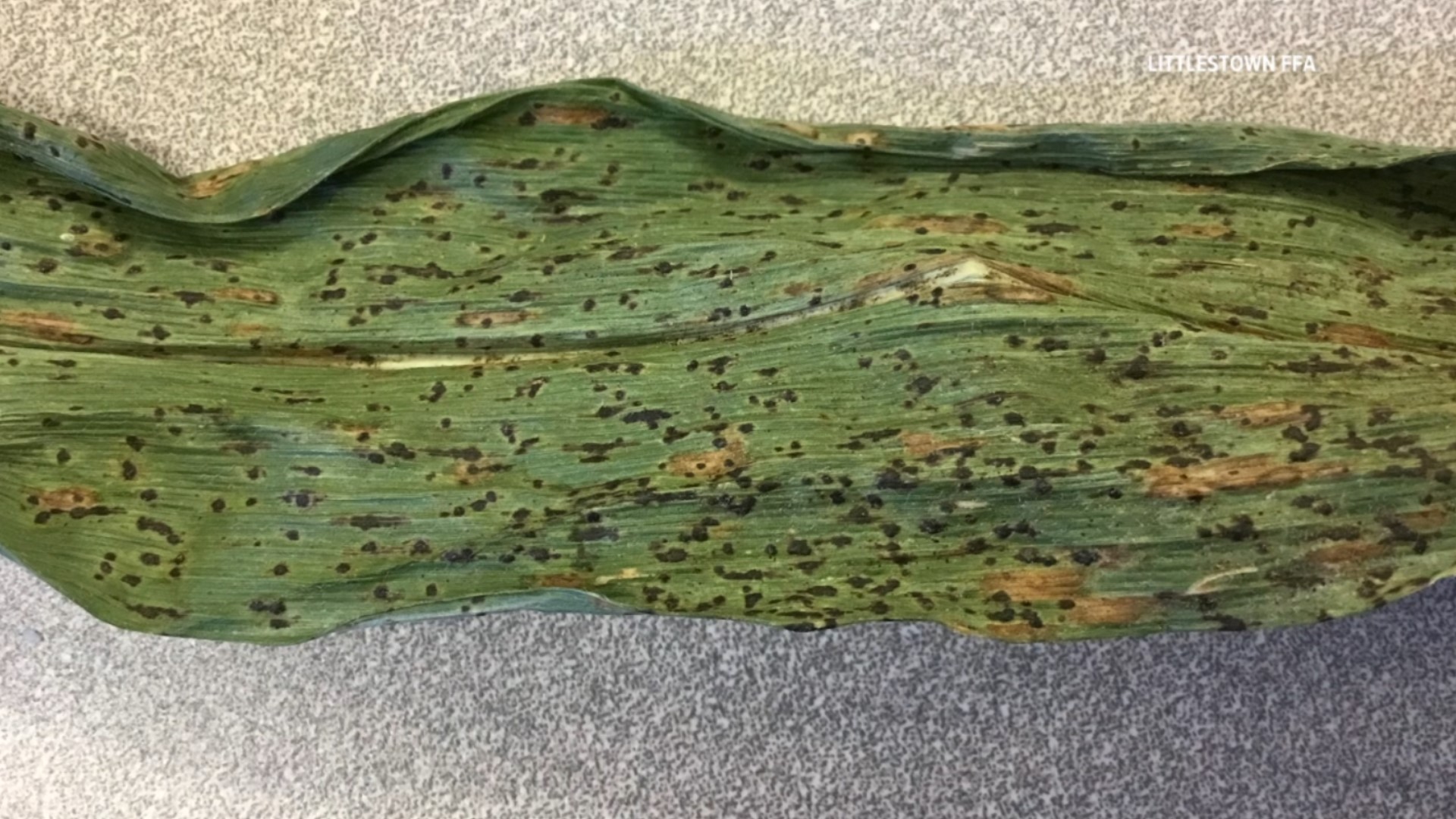ADAMS COUNTY, Pa. — “Tar spot,” an invasive fungal disease of corn, is expected to expand across Pennsylvania in the coming corn season, after being found for the first time in several counties in 2022.
Tar spot appears as black spots on the leaves of corn.
Originally endemic to the mountainous regions of Mexico and Central America, the disease was first found in the United States in 2015, but isolated to Illinois and Indiana. By 2022, it had spread across the Midwest and into at least 18 Pennsylvania counties.
Tar spot was found in Lancaster on July 21, 2022, and confirmed by agronomists at Penn State Extension.
Jesse Brandt, the agriculture teacher at Littlestown High School in Adams County, says he was expecting to encounter it sooner or later.
“It’s one of those things, we knew was coming. It was just a matter of when is it going to show up,” Brandt said.
Littlestown High School has its own fields, where students grow and experiment on crops. The students plant about seven acres of corn.
The “when” Brandt mentioned came in late September.
Students brought in some sweet corn they had just picked from their fields for a service project. One ear of corn had a leaf attached, which was covered in black spots.
“As soon as I saw the disease on it I knew what it was,” said Brandt.
The tar spot discovery was the first in Adams County. Brandt said it was a perfect, if unfortunate, teaching experience.
“By having these fields at school we get to teach them so many things. It’s real life. It’s not just look in the book or look stuff up on the internet,” he said.
In past years, tar spot has cost farmers up to 50% of their crop yield. Whether it becomes a major problem this season in Pennsylvania depends on the weather.
“Fungi are real big fans of moisture, so anytime we have conditions that have prolonged moisture, really dewy conditions, those always tend to favor fungal diseases, and that’s the case with tar spot as well,” said Alyssa Collins, director of Penn State Southeast Agricultural Research and Extension Center.
Tar spot can be treated with fungicides, though that can bring its own problems.
“It’s just one more thing that farmers have to worry about it. If you need to spray for it, you need to spray when the corn is shoulder-high or head-high. If you don’t have equipment to go the field, then you’re going to have to pay someone to go with a big sprayer or a helicopter,” Brandt said. “It’s going to cost more for producers to produce the crop.”
Collins suggested farmers scout their corn fields throughout July to catch the disease early.

